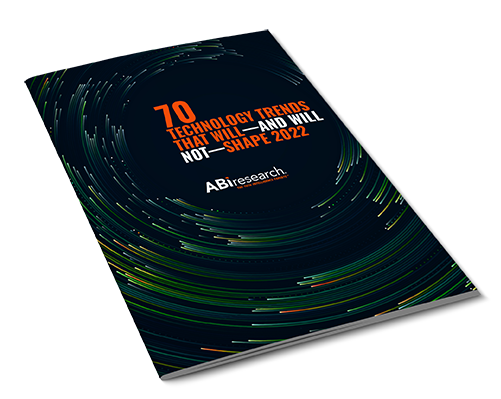
In its new whitepaper, 70 Technology Trends That Will—and Will Not—Shape 2022, ABI Research analysts identify 35 trends that will shape the technology market and 35 others that, although attracting huge amounts of speculation and commentary, are less likely to move the needle over the next twelve months. "The fallout from COVID-19 prevention measures, the process of transitioning from pandemic to endemic disease, and global political tensions weigh heavily on the coming year's fortunes. This whitepaper is a tool for our readers to help shape their understanding of the key critical trends that look set to materialize in 2022 as the world begins to emerge from the shadow of COVID-19. It also highlights those much-vaunted trends that are less likely to have meaningful impact in 2022," says Stuart Carlaw, Chief Research Officer at ABI Research.
What Will Happen in 2022: Rise of Digital Twin Marketplaces
Manufacturers need a range of capabilities to deploy digital twins, including Computer-Aided Design (CAD) modeling, connectivity, cloud computing, Industrial Internet of Things (IIoT) software platforms, remote monitoring, hardware for shop floor workers (tablets, AR glasses), physics-based simulation, ML, and systems integration. This is because digital twins are not a technology, but a composition of solutions aimed at bridging the physical and digital worlds, from design through simulation, manufacturing, assembly, and after-sales service and support. Over the last few years, digital twins have grown from a concept to become mainstream with the help of IIoT dashboards and near-real-time reporting. This level of maturity has been accompanied by new thought constructs, such as the use and implementation of AI at scale, changing requirements like the need for model libraries and standards bodies, and soon, the emergence of digital twin marketplaces that enable Independent Software Vendors (ISVs and other third parties to build relevant tools for the ecosystem. These tools are essential for continued value creation and the wider democratization and adoption of digital twins. Spending on industrial digital twins will grow from US$4.6 billion in 2022 to US$33.9 billion in 2030 at a 28% Compound Annual Growth Rate (CAGR).
What Won't Happen in 2022: 5G Will Not Permeate the Production Line
As of July 2021, there were 84 sites with publicly announced private cellular network (4G/5G) deployments. All are at large companies and facilities, with examples including ABB, Airbus, BASF, Daimler AG, Ford, Haier, Konecranes, and Nippon Steel. While important, current deployments are mostly used as campus networks or in a lab or intermediary production development center for non-industrial production applications. Standards work by 3GPP and 5G-ACIA continues to advance adoption and use of the technology; however, the device ecosystem and implementation/management functions lag. There is also a question of relevance: two-thirds of manufacturers employ fewer than 20 people. In its current form, working with and trialing 5G in manufacturing favors large companies/factories with the R&D capital to test and learn. These larger companies and locations have started to evaluate the cost and benefits of different deployment scenarios (a key progression); however, 5G will not be relied upon for production-critical applications at scale until 2024.

 iConnectHub
iConnectHub
 Login/Register
Login/Register Supplier Login
Supplier Login


























